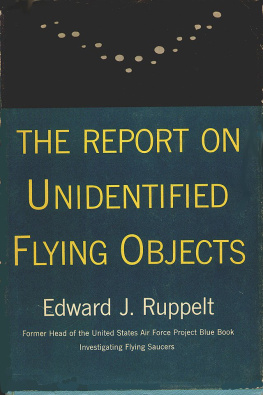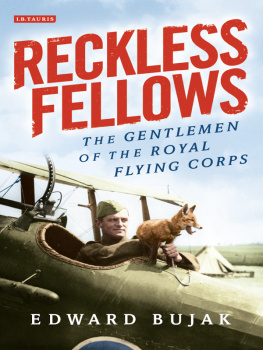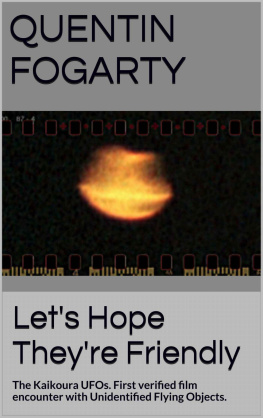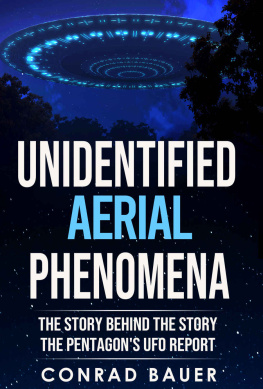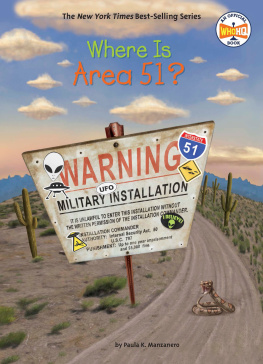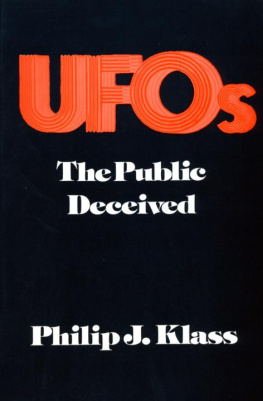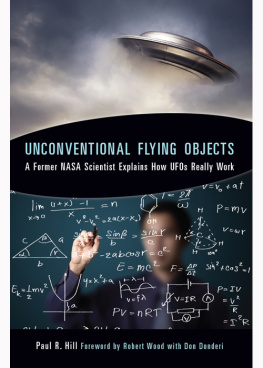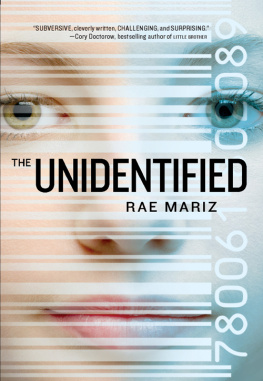Edward J. Ruppelt. - The Report On Unidentified Flying Objects
Here you can read online Edward J. Ruppelt. - The Report On Unidentified Flying Objects full text of the book (entire story) in english for free. Download pdf and epub, get meaning, cover and reviews about this ebook. year: 0, genre: Detective and thriller. Description of the work, (preface) as well as reviews are available. Best literature library LitArk.com created for fans of good reading and offers a wide selection of genres:
Romance novel
Science fiction
Adventure
Detective
Science
History
Home and family
Prose
Art
Politics
Computer
Non-fiction
Religion
Business
Children
Humor
Choose a favorite category and find really read worthwhile books. Enjoy immersion in the world of imagination, feel the emotions of the characters or learn something new for yourself, make an fascinating discovery.
- Book:The Report On Unidentified Flying Objects
- Author:
- Genre:
- Year:0
- Rating:5 / 5
- Favourites:Add to favourites
- Your mark:
- 100
- 1
- 2
- 3
- 4
- 5
The Report On Unidentified Flying Objects: summary, description and annotation
We offer to read an annotation, description, summary or preface (depends on what the author of the book "The Report On Unidentified Flying Objects" wrote himself). If you haven't found the necessary information about the book — write in the comments, we will try to find it.
The Report On Unidentified Flying Objects — read online for free the complete book (whole text) full work
Below is the text of the book, divided by pages. System saving the place of the last page read, allows you to conveniently read the book "The Report On Unidentified Flying Objects" online for free, without having to search again every time where you left off. Put a bookmark, and you can go to the page where you finished reading at any time.
Font size:
Interval:
Bookmark:
Contents
Project Blue Book and the UFO Story, 1
The Era of Confusion Begins, 15
The Classics, 29
Green Fireballs, Project Twinkle, Little Lights, and Grudge, 47
The Dark Ages, 59
The Presses Roll-The Air Force Shrugs, 69
The Pentagon Rumbles, 82
The Lubbock Lights, Unabridged, 96
The New Project Grudge, 111
Project Blue Book and the Big Build-Up, 123
The Big Flap, 139
The Washington Merry-Go-Round, 156
Hoax or Horror?, 173
Digesting the Data, 186
The Radiation Story, 199
The Hierarchy Ponders, 209
What Are UFO's?, 226
This is the first serious book about UFOs to be written by anyone actively connected with the official investigation of these phenomena. As chief of the Air Force project assigned to the investigation and analysis of UFOs, Mr. Ruppelt and his staff studied over 4,500 reports and discussed them with everyone from out-and-out crackpots to top-level scientists and generals
All reports received were subjected to military intelligence analysis procedures. Astronomers, physicists, aerodynamic engineers, and psychologists were consulted in the course of the Air Force's exhaustive investigations. The official Air Technical Intelligence Center reports of their findings, many details from which are revealed for the first time in this book, contain some completely baffling detailed accounts of UFO sightings by thoroughly reliable witnesses.
Here are the complete official accounts of the classic cases - the Lubbock Lights, the Utah Movies, the Florida Scoutmaster, the Washington Sightings - as well as a wealth of less- publicized but equally amazing incidents.
While others who have written books and articles on UFOs imply that they were conferring with officials in the inner sanctum, Mr. Ruppelt, as this fascinating book makes clear, was the inner sanctum.
About the Author
From early 1951 until September 1953, Edward J Ruppelt was chief of the United States Air Force's Project Blue Book, an operation of the Air Technical Intelligence Center. Since 1953 the author has been in close contact with the present project staff and recently made a trip across the country to check current developments. Mr. Ruppelt is now a research engineer for the Northrop Aircraft Company. - 1956
This online book was produced by NICAP Site Coordinator, Francis L. Ridge, and authorized by the Center for UFO Studies
Project Blue Book and the UFO Story
In the summer of 1952 a United States Air Force F-86 jet interceptor shot at a flying saucer.
This fact, like so many others that make up the full flying saucer story has never before been told.
I know the full story about flying saucers and I know that it has never before been told because I organized and was chief of the Air Force Project Blue Book, the special project set up to investigate and analyze unidentified flying object, or UFO reports. (UFO is the official term that I created to replace the words 'flying saucers.")
There is a fighter base in the United States which I used to visit frequently because, during 1951, 1952, and 1953, it got more than its share of good UFO reports.
The commanding officer of the fighter group, a full colonel and command pilot, believed that UFO's were real. The colonel believed in UFO's because he had a lot of faith in his pilots - and they had chased UFO's in their F-86's. He had seen UFO's on the scopes of his radar sets, and he knew radar.
The colonel's intelligence officer, a captain, didn't exactly believe that UFO's were real, but he did think that they warranted careful investigation. The logic the intelligence officer used in investigating UFO reports - and in getting answers to many of them - made me wish many times that he worked for me on Project Blue Book.
One day the intelligence officer called me at my base in Dayton, Ohio. He wanted to know if I was planning to make a trip his way soon. When I told him I expected to be in his area in about a week, he asked me to be sure to look him up. There was no special hurry, he added, but he had something very interesting to show me.
When we got wind of a good story, Project Blue Book liked to start working on it at once, so I asked the intelligence officer to tell me what
2. The Report on Unidentified Flying Objects
he had. But nothing doing. He didn't want to discuss it over the phone. He even vetoed the idea of putting it into a secret wire. Such extreme caution really stopped me, because anything can be coded and put in a wire.
When I left Dayton about a week later I decided to go straight to the fighter base, planning to arrive there in midmorning. But while I was changing airlines my reservations got fouled up, and I was faced with waiting until evening to get to the base. I called the intelligence officer and told him about the mix-up. He told me to hang on right there and he would fly over and pick me up in a T-33 jet.
As soon as we were in the air, on the return trip, I called the intelligence officer on the interphone and asked him what was going on. What did he have? Why all the mystery? He tried to tell me, but the interphone wasn't working too well and I couldn't understand what he was saying. Finally he told me to wait until we returned to his office and I could read the report myself.
Report! If he had a UFO report why hadn't he sent it in to Project Blue Book as he usually did?
We landed at the fighter base, checked in our parachutes, Mae West's, and helmets, and drove over to his office. There were several other people in the office, and they greeted me with the usual question, "What's new on the flying saucer front?" I talked with them for a while, but was getting impatient to find out what was on the intelligence officer's mind. I was just about to ask him about the mysterious report when he took me to one side and quietly asked me not to mention it until everybody had gone.
Once we were alone, the intelligence officer shut the door, went over to his safe, and dug out a big, thick report. It was the standard Air Force reporting form that is used for all intelligence reports, including UFO reports. The intelligence officer told me that this was the only existing copy. He said that he had been told to destroy all copies, but had saved one for me to read.
With great curiosity, I took the report and started to read. What had happened at this fighter base?
About ten o'clock in the morning, one day a few weeks before, a radar near the base had picked up an unidentified target. It was an odd target in that it came in very fast - about 700 miles per hour - and then slowed down to about 100 miles per hour. The radar showed that it was located northeast of the airfield, over a sparsely settled area.
Unfortunately the radar station didn't have any height finding equipment. The operators knew the direction of the target and its distance from the station but they didn't know its altitude. They reported the target, and two F-86's were scrambled.
Project Blue Book and the UFO Story.3
The radar picked up the F-86's soon after they were airborne, and had begun to direct them into the target when the target started to fade on the radarscope. At the time several of the operators thought that this fade was caused by the target's losing altitude rapidly and getting below the radar's beam. Some of the other operators thought that it was a high flying target and that it was fading just because it was so high.
In the debate which followed, the proponents of the high flying theory won out, and the F-86's were told to go up to 40,000 feet. But before the aircraft could get to that altitude, the target had been completely lost on the radarscope.
Font size:
Interval:
Bookmark:
Similar books «The Report On Unidentified Flying Objects»
Look at similar books to The Report On Unidentified Flying Objects. We have selected literature similar in name and meaning in the hope of providing readers with more options to find new, interesting, not yet read works.
Discussion, reviews of the book The Report On Unidentified Flying Objects and just readers' own opinions. Leave your comments, write what you think about the work, its meaning or the main characters. Specify what exactly you liked and what you didn't like, and why you think so.

